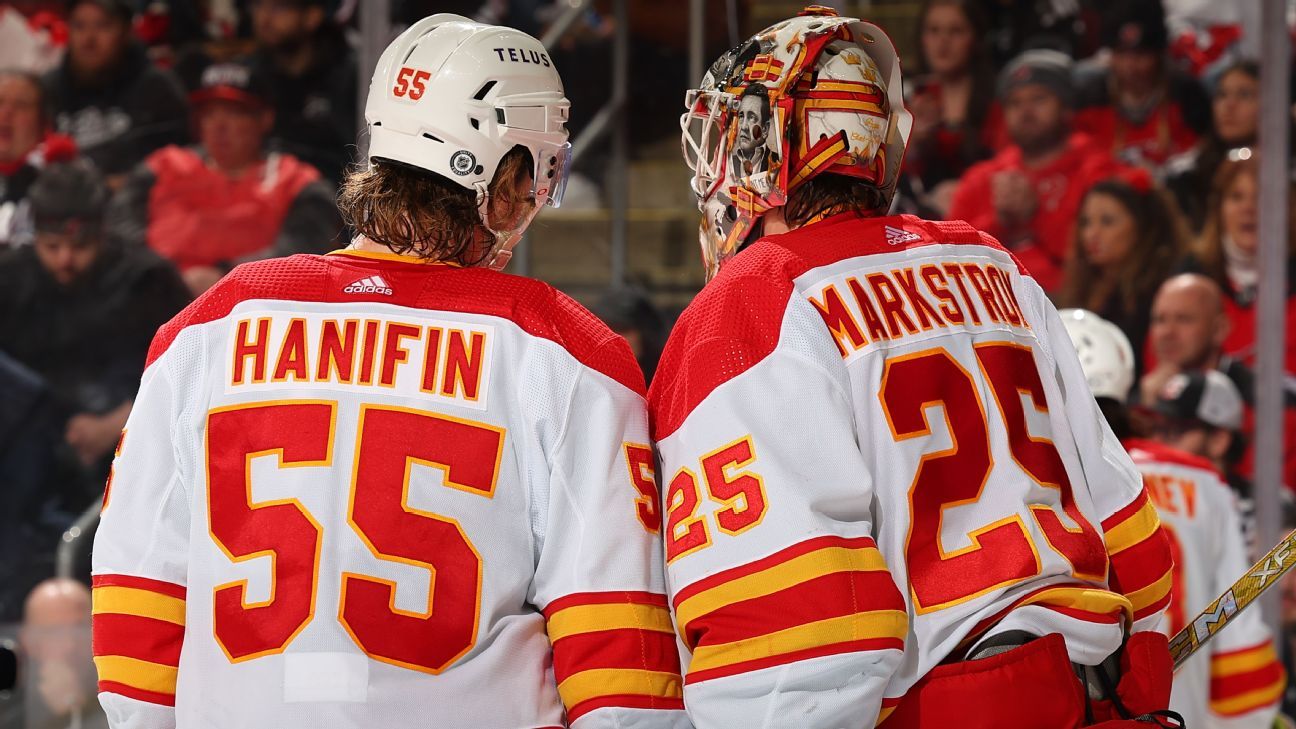It had been a bit quiet on the NHL trade front since Elias Lindholm and Sean Monahan were traded during the NHL All-Star break, but that changed Wednesday night, when Chris Tanev was traded to the Dallas Stars nine days before the trade deadline of March 8.
Who are the contenders that could make a big push? Which teams are caught between either going for a wild-card spot or moving on from players to collect draft capital? And how can the teams that are destined for the lottery use the deadline to gain more draft picks for their rebuilds?
Here’s a comprehensive look at what the trade deadline could mean for every team, complete with the players and picks that are expected to be in play as well as the cap restrictions — including no-movement and no-trade clauses. Plus, we identify the moves we think each team should make.
Stats are collected from sites such as Natural Stat Trick, Hockey Reference and Evolving Hockey. Cap space figures are per Cap Friendly as of Feb. 28.
Note: Kristen Shilton provided the guide for the Atlantic and Metropolitan teams, while Ryan S. Clark handled the Central and Pacific clubs.

ATLANTIC DIVISION

Deadline status: Looking to upgrade
Cap space: $57,500
Players, picks in play: D Derek Forbort, D Matt Grzelcyk, F Jake DeBrusk, G Linus Ullmark
What they should do: Boston has been one of the league’s top teams this season. The Bruins’ roster is comfortably sound in all areas — but that won’t be enough to satisfy GM Don Sweeney and an organization in clear win-now mode.
Boston would benefit from adding a versatile center and/or a top-four defenseman to ensure it stays in the thick of a heated Atlantic Division race. But the Bruins have precious little cap space to wield, so if change is coming in Boston, it’ll be through leveraging players — namely, pending UFAs — already in the lineup.
The notion of moving Linus Ullmark — who has a partial no-trade clause — seems incongruent with chasing a Stanley Cup this season, and yet the amount of attention Ullmark is drawing from other teams could generate an offer to which Boston can’t say no (and Jeremy Swayman certainly looks capable of being a No. 1 guy). DeBrusk is also an attractive option for contenders seeking top-nine depth, and the Bruins have some veteran defenders who might appeal to trade partners seeking blue-line insurance. Boston hasn’t stood pat in recent years, so expect the Bruins to be active again this deadline.

Deadline status: Disappointed to be trading away again
Cap space: $35,184,434
Players, picks in play: D Erik Johnson, F Zemgus Girgensons, F Jordan Greenway, F Kyle Okposo, F Victor Olofsson
What they should do: Buffalo did not take the significant step forward this season that was hoped for or expected. The Sabres didn’t come close to sniffing out a playoff spot, and their best players — including top center Tage Thompson — struggled enough to sour the year even further.
Buffalo can salvage something from this campaign at the trade deadline by cutting ties with pending UFAs in return for picks or prospects who support its mission of eventually being a postseason contender. GM Kevyn Adams would be wise to get in touch with playoff-bound clubs in need of bottom-six or third-pairing depth, because the Sabres have a few names to fit the bill. And given where Buffalo is at — with enough core talent in place to drive the bus eventually — the Sabres can afford to take on some greener prospects to grow with over time, too.

Deadline status: Cautious adders
Cap space: $13,715,374
Players, picks in play: D Shayne Gostisbehere, D Justin Holl, D Olli Maatta, F Jonatan Berggren
What they should do: Detroit took its time finding a groove this season. But the Red Wings have begun to soar, in no small part because of flourishing team chemistry. Theirs is a group that enjoys playing together and is doing so at an increasingly high level.
GM Steve Yzerman has to take that into consideration when approaching a deadline plan. Yes, the Red Wings should be spying a depth forward or reliable veteran defender to give them the best shot at securing a postseason berth. But any additions must complement the character of Detroit’s dressing room, lest Yzerman disrupt what Detroit has grown into these past few months.
The Red Wings have cap room to use, which is necessary given they likely won’t want to part with anyone too integral to the team now. There are a number of defensemen Yzerman has already taken calls on whom he could leverage in a deal. It has taken Detroit years to be in a position to acquire players again at the deadline. They should absolutely be in that position, but proceeding with caution is a must as well.

Deadline status: Confident contenders
Cap space: $5,719,698
Players, picks in play: 2024 third-round pick, F Steven Lorentz, F Anton Lundell, F Mackie Samoskevich, F Kevin Stenlund
What they should do: Florida is already loaded, but that doesn’t preclude it from loading up even more before March 8. The Panthers have been eyeing Calgary defenseman Noah Hanifin to slot onto their stacked blue line, and boosting the team’s top six with another forward would go a long way in keeping Florida near the top of league standings.
The Panthers’ main problem is they don’t have many bargaining chips. Yes, Florida is fortunate to have cap space, but it doesn’t own a first-round draft pick until 2026 and the Flames might require one to part ways with Hanifin. That’s where Lundell comes into play. Florida doesn’t want to see a 22-year-old center head out the door unless the return is undeniably strong. If Lundell could get a Hanifin deal over the line, it’s worth considering.
Also bear in mind that the Panthers have a number of pending UFAs of their own like Sam Reinhart to negotiate with in the next several months. There’s a balancing act here for GM Bill Zito in capitalizing on where Florida is at now without compromising its future.

Deadline status: Rebuilding
Cap space: $5,654,167
Players, picks in play: 2024 first-round draft pick, D David Savard, F Joel Armia, F Tanner Pearson, G Jake Allen
What they should do: Montreal could be one of the most intriguing teams to watch in its approach to the trade deadline.
The Canadiens are still rebuilding — and thus easily fall into a “seller” category — but Montreal doesn’t want to be out of the playoff mix indefinitely. There’s a desire to continue stocking the cupboards with young players the club can deploy now and in years to come. Montreal has a pair of first-round picks in each of the next two drafts it can use to make that happen if GM Kent Hughes wants to pursue a flashier move. Would the Canadiens try going after, say, Anaheim’s Trevor Zegras?
Plus, Montreal has some veterans on the roster that might be better utilized in other places. Allen, for example, might be a decent commodity in this year where several teams are looking for goalie depth. The bottom line for Montreal is it doesn’t have to rush anything. At least, not yet. Hughes can be strategic about the club’s present and future with an option to go off the board if an enticing deal makes itself known.

Deadline status: Re-stacking the deck
Cap space: $109,938
Players, picks in play: D Jakob Chychrun, F Dominik Kubalik, F Vladimir Tarasenko
What they should do: Ottawa is mired in another disastrous season. These last several months have seen the Senators mired in scandal, front office overhauls, poor on-ice play and a coaching change. Ottawa will likely be ending this season as a bottom-dweller once again, when this was supposed to be when the Sens started turning a corner.
To that end, Ottawa’s entire focus should be on how it can come back stronger in 2024-25. And that requires parsing out the players who will — and won’t — be in the team’s long-term plans.
That puts Chychrun and Tarasenko firmly on the trade block, given they both have contracts up in the next year and are drawing outward interest now. Tarasenko does have a full NMC, but you have to think that could be waived to chase another Cup. Ottawa’s stable of sturdy defensemen makes Chychrun expendable.
What the Sens should want in return are prospects they can sign well into the future to complement their sound core of young stars. Because that’s the group destined to eventually help Ottawa rise.

Deadline status: Limited adders
Cap space: $7,383,333
Players, picks in play: D Erik Cernak, F Tyler Motte, F Austin Watson
What they should do: Tampa Bay is a team that always works the phone this time of year, despite never having much cap space. That remains true long term for the Lightning. However, placing Mikhail Sergachev on long-term injured reserve did two things: It gave them a problem to address before the deadline and available cap space to do it.
The Lightning need to boost their back end and, ideally, their goaltending depth behind Andrei Vasilevskiy to keep pace in the Atlantic. Tampa Bay is bottom 10 in goals against (3.39 per game), and not having Sergachev amplifies the issue. GM Julien BriseBois should be looking at a veteran addition to the blue line like Philadelphia’s Nick Seeler, who’s playing great and is a UFA at the end of this season. Or even Arizona’s Matt Dumba could help (he’s also a pending UFA).
The goalie rental market is weak, and Tampa Bay could get by with its current tandem, provided the defensive moves panned out. If the Lightning wanted to go bigger, Cernak may be their best (and only) real bargaining chip. He just started a five-year, $25 million deal, and this is the only season without trade protection. Given Cernak’s slide in and out of the lineup, now would be the time to suss out a new landing spot.
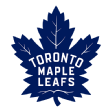
Deadline status: Would-be adders
Cap space: $2,126,666
Players, picks in play: D Conor Timmins, F Noah Gregor, F Bobby McMann, F Nick Robertson
What they should do: Toronto can’t afford not to improve. The team finally started clicking on a seven-game win streak, the length of which it hasn’t seen in 20 years. Auston Matthews is scoring goals at a pace not seen since the 1990’s. Everyone’s getting along. GM Brad Treliving has to make the most of it all with careful additions around the edges.
What does that look like? It’s bringing in help on defense — particularly the right side — and some punch in the bottom six. With Tanev off the board, Dumba could be a fit to help bolster the blue line in a third-pairing spot. L.A.’s Arthur Kaliyev and Minnesota’s Brandon Duhaime are both options to explore up front.
Toronto doesn’t want sweeping changes to its roster. The Leafs haven’t shown they’d part with a first-round pick, but there are younger players and prospects who might be worth moving out to make way for veterans to fill in gaps right now.

METROPOLITAN DIVISION

Deadline status: Active adders
Cap space: $6,679,273
Players, picks in play: 2024 second-round pick, D Tony DeAngelo, D Brett Pesce, D Brady Skjei
What they should do: Carolina is in the enviable position of wanting — but not needing — to add at the deadline, with cap space to wield and players to potentially move. That takes some of the pressure off. GM Don Waddell has been open about looking for a right-shot center or some general top-six forward depth for the Hurricanes, while also acknowledging the exact player Carolina’s spying might not be out there.
However, good options do exist — namely, Pittsburgh’s Jake Guentzel. What sort of difference-maker could Guentzel be for the Hurricanes in another Stanley Cup run? The fit appears to be strong for both sides if the Hurricanes can send Pittsburgh back some blue-line help that it will need to stay in the playoff mix.
Vladimir Tarasenko is another top-tier skater who could blossom among Carolina’s other stars up front. The Hurricanes have seen their goal-scoring stall in the playoffs before. This is the time of year where they guard against disappointment by loading up on veteran skaters who can play anywhere in the lineup.

Deadline status: Make the right moves for the future
Cap space: $18,692,402
Players, picks in play: D Adam Boqvist, D Andrew Peeke, F Jack Roslovic, F Alexandre Texier, G Elvis Merzlikins
What they should do: Columbus would be well-served to play the trade deadline waiting game. As in, let contending teams come to it and see who’s got the best (or most desperate?) offer.
Columbus has some intriguing assets to take calls on and it would help shape the Blue Jackets’ future to make decisions on Roslovic (a pending UFA) and Merzlikins. If there were interested suitors with solid offers for one or both of them, Columbus stocking with prospects to grow within the organization should be a top priority, given where the club is right now.
But there’s no need to rush on deals either. The amount of upheaval Columbus has been through already this season sets the table for a busy offseason regardless of what transpires by the deadline. The Blue Jackets should be able to pick and choose what works for them and feel good if they’re active when March 8 comes and goes.
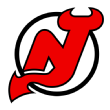
Deadline status: Complicated questioners
Cap space: $9,487,500
Players, picks in play: D Colin Miller, D Brendan Smith, F Alexander Holtz, F Dawson Mercer, F Tyler Toffoli
What they should do: New Jersey must decide whether it’s a playoff team this season. The Devils are in a logjam of Eastern Conference squads fighting for wild-card spots. Does New Jersey genuinely feel it can claw its way into earning one?
If the answer is yes, then the Devils absolutely need a goalie. Stat. New Jersey won’t get anywhere from here without upgrading between the pipes.
Unfortunately for the Devils, when a requirement is so glaring, it does diminish bargaining power. But that shouldn’t stop New Jersey from (slightly) overpaying at the deadline to help secure themselves a playoff spot. Calgary’s Jacob Markstrom and Nashville’s Juuse Saros would be ideal targets for GM Tom Fitzgerald to pursue, given their past pedigrees and current strong play. Plus, each is signed beyond this season, so the upgrade would be more long-term — and could help more slowly shepherd young tenders Nico Daws and Akira Schmid into bigger roles in the future.
New Jersey has a number of assets it can offer up without hurting itself in the short- or long-term. That’s a good situation to be in. Given the Devils aren’t guaranteed anything playoff-wise, there’s no need to push the envelope and add anything more. New Jersey might even be motivated to sell for the future and see where the final weeks of this regular season take it. The plan truly hinges on one question: Is it playoffs or bust for the Devils?
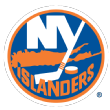
Deadline status: Trust the process
Cap space: $0
Players, picks in play: 2024 first-round pick, D Sebastian Aho, F Brock Nelson, F Kyle Palmieri
What they should do: GM Lou Lamoriello made a splash last season acquiring Bo Horvat and then signed a swath of players in the offseason. When that didn’t put the Islanders in a playoff spot by midseason, Lamoriello changed coaches. And still, New York is in the murky middle clawing its way towards a possible wild-card opportunity despite the fiery Patrick Roy behind the bench.
Lamoriello has said no one on the Islanders is untouchable. He’d also move the club’s first-round draft choice for the right game-changing player that could help the team win right now. It’s a high bar to meet, but not impossible.
New York needs scoring help (it is 23rd in goals this season) and there are players out there who could have an impact. Tarasenko is one low-cost addition; San Jose’s Anthony Duclair might be another. Regardless, Lamoriello will be strategic in whomever he brings in. The clock is ticking though for New York to make the most of what Lamoriello has already done over the past 12 months to make the Islanders a playoff team.

Deadline status: Big buying power
Cap space: $4,383,333
Players, picks in play: 2024 first-round pick, F Kaapo Kakko
What they should do: New York has for the most part been a powerhouse this season. All the Rangers need is some fine-tuning, particularly up front.
Injuries to Filip Chytil and Blake Wheeler have impacted New York’s overall forward depth, and fortunately it has cap space to address that problem immediately. Whether it’s moving on a center like Seattle’s Alex Wennberg, Anaheim’s Adam Henrique, or reuniting with a winger like Tarasenko or Pavel Buchnevich, there are several possibilities.
New York being in prime win-now mode means sacrificing a first-round pick or even a 23-year-old like Kakko in the right deal could be smart business. It all depends on the offer, and New York should be pursuing something to take them over the top.

Deadline status: Stay the course
Cap space: $6,831,547
Players, picks in play: D Nick Seeler, D Sean Walker, F Morgan Frost, F Scott Laughton
What they should do: Philadelphia is in a strange spot. The Flyers have outkicked their coverage this season and are currently in playoff position despite also remaining knee-deep in a rebuild. Huh? It’s crazy stuff.
Philadelphia has some strong players to trade, taking plenty of calls on the likes of Seeler, Walker and Laughton. If the Flyers decide to trade away at the deadline and acquire players for the future, it will match what GM Danny Briere has been trying to do in building a firm foundation for Philadelphia.
The Flyers’ core is unlikely to be touched at this point, but it also doesn’t sound like Briere is looking for additions at this stage, either. Except, perhaps, when it comes to goaltending. Now that Carter Hart is on indefinite leave, there’s a void for the Flyers in net. Is that something Briere tries to remedy at the deadline, or does he wait for the offseason?
Philadelphia is already a success story this season. Briere can approach the deadline conservatively, knowing whatever he does to help the Flyers’ present and future can still fit with the franchise’s long-term goals.

Deadline status: Fight to the finish
Cap space: $4,500,000
Players, picks in play: D Pierre-Olivier Joseph, F Jake Guentzel, F Lars Eller, F Reilly Smith, G Tristan Jarry, G Alex Nedeljkovic
What they should do: Pittsburgh won’t roll over here. The Penguins will battle their way until Game 82 in search of a playoff spot they didn’t land last season.
GM Kyle Dubas should be looking for takers on Smith (and his $5 million contract) and listening to contenders in need of goalie help.
And then of course there’s Guentzel, destined to be this season’s Big Fish (now, or come July 1 as a free agent).
In short, Pittsburgh has pieces in play. But how can Dubas wheel and deal to put the Penguins in a better position to succeed right now? By exchanging those not pulling their weight for skaters who will. Pittsburgh needs to get younger and faster up front and amp up the secondary scoring potential. That will be Dubas’ first priority, and if he can find players who support Pittsburgh’s veteran core, there’s a chance this group can still find its way back into the playoffs.

Deadline status: Focused on the future
Cap space: $9,517,500
Players, picks in play: D Joel Edmundson, F Nic Dowd, F Anthony Mantha, F Max Pacioretty
What they should do: Washington was a surprise seller at the last trade deadline. It won’t be a surprise this time around.
GM Brian MacLellan wants to move some of the Capitals’ larger veteran contracts — players like Dowd, Mantha and Edmundson. Those aren’t guys destined to be with the organization for years to come, and MacLellan is focused on getting younger.
It’s been a couple seasons now where Washington has tried to balance staying competitive for the sake of veterans like Alex Ovechkin, while also going through a necessary rebuilding process. MacLellan should spend deadline season shedding where he can to collect picks and prospects.
Washington is still in the postseason mix to some degree, but unlike some of the Metropolitan Division rivals (in, say, New Jersey or Pittsburgh), the Capitals won’t become buyers to make it happen. That’s the right call. Washington should not be sacrificing any future gains for a few more wins today.

CENTRAL DIVISION

Deadline status: Keep building for the road ahead
Cap space: $15,646,747
Players, picks in play: D Matt Dumba, F Jason Zucker
What they should do: Even though this season started on a different track, there was always the possibility the Coyotes would be subtracting at the deadline. It’s what made the decision to add Dumba and Zucker in the offseason intriguing. Acquiring them allowed the Coyotes to have a pair of pending UFAs that could either help them make a push for the postseason or be moved ahead of the deadline.
Moving on from Dumba and Zucker looks like the plan. Any playoff aspirations were dashed by an 11-game losing streak that led to them eventually being more than a dozen points adrift of a playoff spot and within 16 points of the NHL’s worst record. Their current situation along with their ability to add more draft capital could see this become another fruitful deadline.
They have the space to provide any team interested in Dumba or Zucker the financial flexibility to facilitate a deal. They also have the space to potentially serve as a third-party broker, with the caveat they only have two retention slots instead of three because they’re still on the hook for the Oliver Ekman-Larsson buyout. It leaves the Coyotes in a position to add to a draft pick war chest that already includes 12 picks in this summer’s draft, followed by another 21 combined picks over the next two drafts.

Deadline status: Focus on their future
Cap space: $42,158,647
Players, picks in play: F Anthony Beauvillier, F Colin Blackwell, F Tyler Johnson
What they should do: Like the Coyotes, adding more draft capital is the objective for the Blackhawks. Their rebuild has relied on attaining extra picks, which is why they own a total of 10 that originally belonged to other teams over the next three years. It’s played a massive role in why the Hawks have two first-round picks in both this year’s draft and next year’s draft. In total, they have 17 draft picks in the first three rounds in the next three years.
They could also land the No. 1 pick for a consecutive season. Collecting that much capital already provides them with a chance to strengthen a future that’s shown promise in the form of Connor Bedard, Kevin Korchinski and Alex Vlasic, among others. It could also help soften the blow of a deadline that has a chance to not be as plentiful compared to previous years.
Beauvillier, Blackwell and Johnson are all pending UFAs. Blackwell is the most team-friendly option with a $1.2 million salary cap hit, while Beauvillier and Johnson each make north of $4.5 million. There’s also the possibility that the Blackhawks could use their cap space to act as a third-party broker in the event they don’t strike a deal involving someone on their roster. Again, keep adding those picks.

Deadline status: This could be their year
Cap space: $1,241,757
Players, picks in play: 2024 first-round pick, 2025 first-round pick
What they should do: Strategically navigate the second-line center market. The Avs believed they’d solved their need for a No. 2 center in the offseason by trading for Ryan Johansen. It’s a move that has not quite gone to plan, with Johansen on pace to finish with 31 points, which would be his lowest total in a season that sees him play more than 70 games. They’ve since used Ross Colton to fill that void while moving Johansen to the third line.
Getting a second-line center in trade will prove costly. Lindholm and Monahan getting traded weeks before the deadline created an even greater premium because there are now fewer options. It’s possible that a team with someone who could be used as one of those coveted second-line centers could seek to drive up the price.
How the Avalanche approach this deadline could impact them in the short and long term. What helped them win a Cup was the ability to part with draft picks and prospects. But that also came with a few associated costs on the back end. The lack of prospects means it’s been harder for them to find players on team-friendly deals; trading away those draft picks is why they’ve drafted only 16 players total since 2020.

Deadline status: This could be their year
Cap space: $2,050,000
Players, picks in play: D Nils Lundkvist, 2024 first-round pick, 2024 second-round pick, 2025 first-round pick, 2026 first-round pick
What they should do: Finding a top-pairing right-handed defenseman who could complement Miro Heiskanen was the objective for the Stars ahead of the deadline. They succeeded in that task by getting Tanev in a trade that saw a pair of draft picks along with prospect defenseman Artem Grushnikov go in the other direction, and the Devils serving as a third-party broker.
One of the details the Stars had to consider was the cost of the trade. They were able to get one of the most sought after players — and the No. 1 right-handed defenseman believed to be available – without giving up a first-round pick. But it also means that the Stars also have just three total picks in this summer’s draft.
The methods that were used to sort out Tanev’s $4.5 million cap hit among the three teams also means the Stars could possibly make another move. Cap Friendly projects the Stars still have a little more than $2 million in cap space at the deadline. It’s possible that the Stars could be in play for one more deal. Even if they’re not, the decision to get Tanev once again reinforces how the Stars are in a championship window.

Deadline status: They’ll eventually have to make a decision
Cap space: $4,528,333
Players, picks in play: F Brandon Duhaime, G Marc-Andre Fleury, F Pat Maroon, D Jon Merrill
What they should do: Exercising patience for as long as they can is the dilemma that’s facing the Wild entering the deadline. They’re among a group of teams that entered Feb. 28 within six points of the final Western Conference wild-card spot. Being in that particular position means they must take one of two paths in the coming days.
Would it be more prudent to trade players and get draft capital? Or do they hold firm with the belief they can get back to the playoffs? There are numerous factors that make answering those questions before the deadline difficult. But the Wild are not the only team in the Western Conference that are contemplating the same questions.
There will come a point when the Wild must make a decision that they can live with. Is it worth the risk to move on from players only to fall three points short of a wild-card spot and be left to wonder what could have been? Or do they run another risk by holding onto their players, missing the playoffs and possibly regret missing out on the chance to add more draft capital?

Deadline status: Be strategic with all of their options
Cap space: $37,194,098
Players, picks in play: D Tyson Barrie, D Alexandre Carrier, G Juuse Saros
What they should do: If it’s one thing the Predators have, it’s options. And could moving on from Saros be one of them? Preds GM Barry Trotz told a Nashville radio station this week that he will “leave a little window open” in the event he receives a substantial offer for Saros, who has one more year left on his contract worth $5 million per season.
Electing to keep Saros could prove to be a prudent move, considering the Predators continue to win games and gain separation in the wild-card race. Entering Feb. 28, the Preds had won six straight games which allowed them to create a five-point edge in the chase for the final playoff spot in the West.
Cap Friendly projects the Preds will have more than $37 million in deadline cap space. That gives them the sort of financial edge to entertain any number of possibilities. They could add help. They could use that space to add draft capital as a third-party broker to add to their 11 picks in this year’s draft. They could also use that capital to retain salary in the event they choose to move on from Barrie, who went from a top-four option to their seventh defenseman.

Deadline status: They’ll eventually have to make an ultimate decision
Cap space: $2,217,083
Players, picks in play: F Pavel Buchnevich, F Kevin Hayes, F Kasperi Kapanen
What they should do: The Blues are also part of that group of teams that must decide between going after a wild-card spot or moving on from players to attain draft capital. As of Feb. 28, they were six points behind the Predators but have played two fewer games.
Keeping pace with the Predators is just one part of the equation. Another is that Blues GM Doug Armstrong must consider how players like Buchnevich, Hayes and Kapanen fit into the future plans. Buchnevich has one year left on a four-year contract that sees him earn $5.8 million annually. He’s averaged 0.99 points per game in his three seasons with the Blues. Keeping him would allow the Blues to retain one of their most consistent performers for another season, with the idea they’d eventually have to make a decision about his future. Moving on from him during this deadline, however, could provide them with the opportunity for a sizable return given who else is available.
Hayes and Kapanen also present interesting cases. The Blues traded a sixth-round pick for Hayes less than a year ago, and could get more than that because his reduced rate $3.571 million annual salary for the next two seasons provides top-nine help at a manageable number. Kapanen, who they acquired on waivers last season, is a pending UFA that could offer another team depth — and give the Blues a chance to add more draft capital.

Deadline status: This could be their year
Cap space: $5,843,794
Players, picks in play: 2024 second-rounder (MTL), 2025 first-round pick, 2025 second-round pick, 2026 first-round pick
What they should do: Continue to signal their intent to challenge in the Western Conference by making one more addition ahead of the deadline. After being knocked out in the first round last year, the club hopes for a longer run this time around, especially given their regular-season success.
Trading for Monahan allowed the Jets to add a second-line center for less than $2 million, with Cap Friendly projecting they’ll have slightly less than $6 million in available space. They already had nine players with more than 20 points this season, and Monahan has six goals and seven points through nine games as a Jet.
It appears that the next move for the club could be adding a top-four right-handed defenseman — another sign that the Jets are extremely serious about their title chances this season.
Getting one of those right-handed defensemen would provide them more balance on the back end that would fit within the Jets’ overall blueprint of winning as a collective. Even if the Jets don’t make another move before the deadline, they were still able conduct business ahead of most teams. But if they were to make another trade? It could make them even more formidable.

PACIFIC DIVISION

Deadline status: Continue to build for their future
Cap space: $38,526,327
Players, picks in play: F Sam Carrick, F Adam Henrique, D Ilya Lyubushkin, F Frank Vatrano, F Trevor Zegras
What they should do: Make what’s considered to be one of the NHL’s most promising farm systems even stronger. The rebuilding Ducks, similar to others in their position, have made the future a focal point. How they manage this year’s trade deadline could play a significant role in how they can shape that future.
Need a second-line center? The Ducks have the most attractive one available in Henrique, a pending UFA. Searching for a top-nine forward? The Ducks have one of those in Vatrano, who has one year left on his contract at $3.65 million and is on pace to score 37 goals. Is your team in need of a right-handed defenseman? The Ducks also have one of those in Lyubushkin, who is a pending UFA. What about a depth forward? Yes, the Ducks have that too with Carrick, who is also a pending UFA.
And if your team needs a 22-year-old forward who has a pair of 20-goal seasons on his résumé? It seems like Zegras could potentially be available as well.
The fact they have numerous players who meet several needs plus the fact they still have all of their retained salary slots could result in the Ducks having one of the best deadlines of any team in the NHL. Whatever they gain from the deadline would be the start of what has a chance to be a pivotal offseason for a franchise that is in contention for their third top-three pick in the last four seasons.
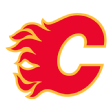
Deadline status: They’ll eventually have to make a decision
Cap space: $4,400,722
Players, picks in play: G Jacob Markstrom, D Noah Hanifin
What they should do: Trading Tanev to the Stars answered one question for the Flames, but now there are other questions they must answer. Perhaps the most notable questions that are facing the Flames are the ones surrounding Hanifin and Markstrom.
When it comes to Hanifin, there is the expectation that he will not re-sign with the Flames, and that means they would either need to move him at the deadline or potentially risk losing one of their most important players in free agency without receiving anything in return.
The dynamics with Markstrom appear to be different, considering he has two more years left on his contract at $6 million annually. Having Markstrom under team control for that amount of time means the Flames can exercise patience unless this deadline provides them with a deal for Markstrom that’s too strong to rebuff.
Knowing the Flames are open for business also comes at a time that has seen them become one of the NHL’s hottest teams that’s also trying to remain in the wild-card race. They entered Feb. 28 on a four-game winning streak. They have won eight of their last 11 games, including seven of the 10 games since trading Lindholm. It now leaves the Flames’ front office asking one more question going into the deadline: Can they keep this up?

Deadline status: This could be their year
Cap space: $2,373,102
Players, picks in play: 2024 first-round pick, 2024 second-round pick, 2025 first-round pick, 2026 first-round pick
What they should do: There is an expectation that the Oilers are going to add someone. As for if it is a top-nine forward or a top-four defenseman, that remains to be seen. But any deal for the Oilers would mean they’d have to find solutions for their salary cap challenges, and that could include moving on from certain players in order to make those additions.
Another top-nine forward would give the Oilers another option beyond a top-six group that has accounted for 71% of their goals this season. But adding a top-four defenseman — especially if a right-handed one — could also create the sort of depth that would hypothetically move Codi Ceci to the third pairing, giving the Oilers a left-right combination in all of their defensive amalgamations.
Pulling off a deal could prove challenging. The Oilers have draft picks, but have a limited farm system compared to other teams mainly due to trading picks away. Cap Friendly also projects that the Oilers will have a little more than $2.3 million in deadline cap space. While that gives the Oilers some room to operate, they could be forced to create more space. Trading players with deals that are easier to move — such as Warren Foegele, Brett Kulak and Ceci — is one route to do so. Foegele is a pending UFA. Kulak has three years remaining at $2.75 million annually, while Ceci has two years left at $3.25 million AAV.

Deadline status: Be strategic with their decisions
Cap space: $2,582,499
Players, picks in play: F Arthur Kaliyev, 2024 first-round pick, 2025 first-round pick, 2025 second-round pick, 2026 first-round pick, 2026 second-round pick
What they should do: Adding top-nine wingers has become the priority for the Kings considering their recent injury issues. They played the first 50 games of the season without Viktor Arvidsson, who was recovering from back surgery in October. He returned to the lineup in February at the same time they moved another winger, Carl Grundstrom, to LTIR.
Arvidsson played four games before sustaining another injury that led to him going back to LTIR. Now it appears that the Kings could have a third winger who could get moved to LTIR with Adrian Kempe, who leads them in points, suffering an upper-body injury Feb. 26 in Calgary. Kempe left the team and flew back to Los Angeles to undergo testing.
Those compounding injuries to three top-nine wingers has now placed the Kings in the position of an extremely active team at the deadline. Especially as the Kings have won six of their first nine games under interim coach Jim Hiller, which allowed them to climb back into the discussion of capturing one of the three Pacific Division spots (and if not, the wild card).
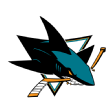
Deadline status: Keep building for the future
Cap space: $11,378,615
Players, picks in play: F Alexander Barabanov, F Anthony Duclair, F Mikael Granlund, F Mike Hoffman, G Kaapo Kahkonen, F Kevin Labanc
What they should do: Rebuilding franchises are going to devise rosters with players they know could be moved at the deadline for draft capital. The Sharks are no different in that their main objective with this year’s deadline is to attain as many picks as possible in a season that could also see them land the No. 1 pick.
They have several pending UFAs available. Meanwhile, Granlund could be a second-line center option for a team that can make his cap hit work on their payroll (and has another year left on his deal). Even with the players they could trade, the Sharks have only one of their retention spots available (for third-party brokering services), while some other teams have three.
That doesn’t totally freeze the Sharks out from being involved as a broker at the deadline. But it does make it harder for them compared to teams such as the Blackhawks and Ducks that have more flexibility because they have all of their retained salary slots.

Deadline status: They’ll eventually have to make a decision
Cap space: $4,928,795
Players, picks in play: F Pierre-Edouard Bellemare, F Jordan Eberle, D Justin Schultz, F Tomas Tatar, F Alex Wennberg
What they should do: How the Kraken approach the deadline could be determined by how they perform in the final days before the cutoff. After reaching the playoffs last season, they’ve been mercurial by comparison in 2023-24. For example, they won five straight in January as part of a nine-game winning streak … prior to losing four in a row, before alternating wins and losses to end the month. The same kind of up-and-down behavior has held true in February, as they opened 4-4.
On Feb. 28, there were three teams and a seven-point gap separating the Kraken from the final wild-card spot. There’s a chance that this might be too much for the Kraken to overcome. There’s also the possibility that they could go on a winning streak to remain in the hunt. Either outcome wouldn’t be surprising, because that’s been the narrative of their season to this point.
There is a constant for the Kraken in that they have pending UFAs such as Bellemare, Eberle, Schultz and Wennberg who have playoff experience. As for the team who could take advantage of that playoff experience? Maybe it’ll be the Kraken. Maybe it’ll be someone else.

Deadline status: This could be their year
Cap space: $3,524,583
Players, picks in play: 2025 first-round pick, 2025 second-round pick, 2026 first-round pick, 2026 second-round pick
What they should do: Being aggressive is what allowed the Canucks to change their fortunes over the past 12 months. It’s what allowed them to make an early trade for Nikita Zadorov before they eventually got the jump on Lindholm and altered the market for top-six centers. Continuing to be aggressive is what could allow the Canucks to make one more significant addition before the deadline.
Cap Friendly projects that the Canucks will have a little more than $3.5 million in deadline cap space to facilitate a deal. And while they have given up first-round picks to get Lindholm this season and Filip Hronek last season, it’s something they can do again with their first-rounders in 2025 and 2026 if necessary.
They’re expected to be in the market for either another top-four defenseman or another top-nine forward in a campaign that has seen them emerge as a potential title contender. Whatever route the Canucks take ahead of the deadline will set the stage for an offseason that is expected to have significant ramifications on their roster. They’ll have 10 players who are pending UFAs, and star center Elias Pettersson, a pending restricted free agent, will be in need of a new deal.

Deadline status: This could be their year. Again.
Cap space: $6,012,500
Players, picks in play: 2024 first-round pick, 2024 second-round pick, 2025 first-round pick, 2025 second-round pick
What they should do: Much of what the Golden Knights do ahead of the deadline depends upon the health of Mark Stone. The Golden Knights’ captain was moved to injured reserve and will be week-to-week with an upper-body injury. If the Golden Knights discover that Stone could miss a significant amount of time, they would likely move him to LTIR which would free up cap space for them to find some reinforcements.
The situation facing the Golden Knights now is similar to what they encountered around this time last year with Stone. He had just undergone a second back procedure in 12 months, and was moved to LTIR. That created the cap space for the Golden Knights to trade for Ivan Barbashev and Teddy Blueger, who both played important roles in their Stanley Cup victory.
The possibility of Stone moving to LTIR comes as Jack Eichel, who is currently on LTIR, resumed skating with the team Feb. 27. If Stone hits LTIR, the expectation is that the Golden Knights would seek another top-six winger who could fill in while he recovers — and help the club win a consecutive title. This team isn’t bashful about taking big swings, and should do so again given that reigning Conn Smythe winner Jonathan Marchessault and Chandler Stephenson are pending UFAs.
